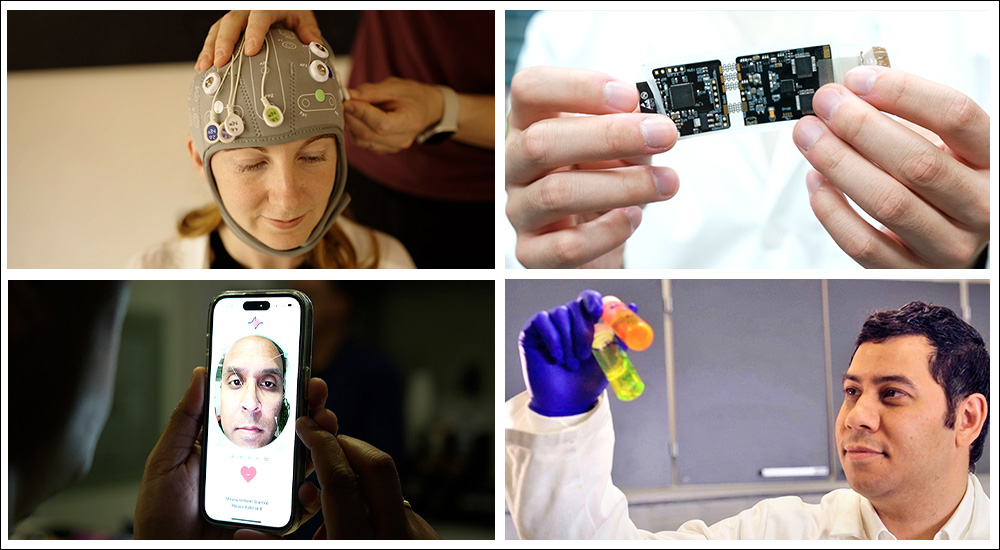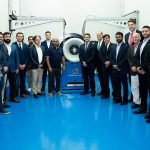CNN’s The Next Frontier showcases advances in healthcare technology

In a new episode of The Next Frontier, CNN’s Rahel Solomon explored ‘How We’ll Thrive’ in the future, meeting the scientists, doctors, and engineers inventing new ways to diagnose diseases and increase lifespan.
Dr Daniel Kraft, founder of NextMed Health describes how medical technology might look in the years ahead, “I think in 2050 we will be much more on the health care side rather than the sick care. I think prevention, proactive detection, and early intervention is the future of healthcare. And we now have the tools to do it.”
For Michael Snyder, Chair of Genetics at Stanford School of Medicine, the future of technology is all about big data. He explains, “We like to think of your health as a thousand-piece jigsaw puzzle. The way we measure today is with five or six pieces. And we’re capable of measuring five or 600 pieces, getting a much, much clearer picture of your health. And we think with that, we can see better what’s going on.”
While wearable health technology is becoming more widespread, the future may lie in ‘implantables’. At Imperial College London, Ali Yetisen is creating ‘smart tattoos’, which have the potential to be the health trackers of the future. “In the next three years, we will be focusing on clinical trials in humans in order to bring this useful technology to patients”, he tells CNN. “In the next decades, we will see the evolution of these tattoo technologies to serve as a diagnostic platforms in order to help patients around the world.”
Yetisen says his injectable ink-based biosensors can monitor health markers like blood sugar and hydration levels, as well as kidney and liver function in real time. “One application is in the monitoring of electrolytes. So, this can be used uh for measuring the performance of athletes. Another application is to monitor the sugar levels of diabetic patients. Another application that we are exploring is the inflammatory biomarkers to report on the chronic conditions of the patients.”
Researchers around the world are exploring how ‘digital twins’ – or virtual replicas of physical structures – can be used to forecast performance and identify problems. Roser Sanchez, Research Director at Neuroelectrics explains, “Digital twins in health care are a virtual representation of a patient. So, it simulates the anatomy of the patient to be able to predict how a pathology is going to evolve, or to find biomarkers that may help with the diagnosis of a pathology. And also, to predict how a treatment will act on its patient.”
The simulations aim to mimic a portion of a patient’s specific physiology. To date, scientists have digitally modelled hearts, lungs, and livers. Sanchez’s team is working to replicate the human brain. She tells CNN, “At the end of the day, the brain is very complex. And we don’t even really understand how it works. So, this is the big challenge, to develop great science, being able to translate it into a tangible product or technology and then being able as well to reach the patients.”
Finally, Solomon sees how Anura a ‘health selfie’ app, could revolutionise telehealth. Using a video camera and good lighting, NuraLogix Chief Technology Officer Phil Levy says that Anura can measure around 30 different health indications from a 30-second selfie. “What’s so radical about what we’re doing is it’s non-contact. Our sample comes from the camera and it’s a virtual extraction of your blood flow. We started with heart rate, breathing. These were relatively simple for us in the early days. And then we migrated to blood pressure, cardiovascular disease risks, your triglyceride, your cholesterol.”
Anura uses transdermal optical imaging, a technology that uses light to capture facial blood flow through a video camera. The data is sent to cloud-based affective AI models for processing. Levy explains, “So, for over 7.5 years now we’ve been training models, we have an extensive collection of human samples that we’ve used as our ‘ground truth.’ What I mean by this is for our data collection, we use medically approved regulated equipment. And we establish that as our baseline.”
Dr. Keith Thompson, Chief Medical Officer at NuraLogix says that technology like this is meant to complement, rather than replace, doctors, “We’re still gonna need that personal relationship and we always want our technology to be under that directive control of a physician or a health care provider. It’s going to be hard for my colleagues, I’ll be honest, because I think as AI moves into what I do as a primary care clinician I can fight it, tooth and nail, or I can recognise that it can help me do a much better job than I can by myself.”
Courtesy CNN





